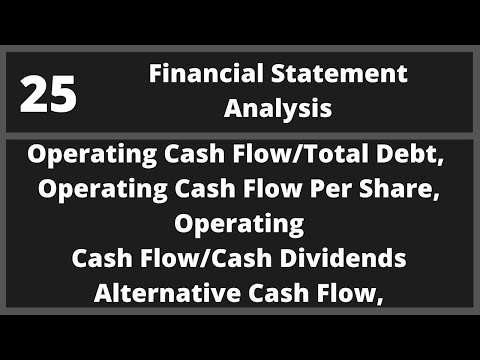
When drawee makes the payment of the bill before maturity, the drawer allows some discount to the drawee, which is known as a rebate. Since it doesn’t represent a product sold or service provided (your source of revenue) I would not record it as such. Discount and rebate are commonly used terms in today’s dynamic markets, especially in the e-commerce world. Rebates and discounts are distinct forms of price cuts that directly or indirectly promote the overall sales of a business. Both the terms may sound similar, however, there is some difference between discount and rebate. Rebate automation software collects information from business systems to manage rebates in real-time.
However, there is another option available to the drawee, which is known as retiring the bill of exchange. When a drawee withdraws a bill of exchange from circulation by paying the amount of the bill before its maturity, this is known as retiring a bill of exchange. Based in Greenville SC, Eric Bank has been writing business-related articles since 1985. For example, a customer discounts a bill of Rs. 30,000 for 3 months at 12% on 1st March 2000. Someone on our team will connect you with a financial professional in our network holding the correct designation and expertise. Our writing and editorial staff are a team of experts holding advanced financial designations and have written for most major financial media publications.
How to Account for Vendor Rebates?
Accounting for vendor rebates can be streamlined and efficient with the aid of rebate management software. Your business can continue to offer incentives to drive sales without having to worry about how to account for, reconcile, and report rebates because the software will do it for you. Rebates paid for by the supplier are accounted for as a reduction of the cost of goods sold (COGS).
Study finds changes in air pollution due to EV adoption are not … – Green Car Congress
Study finds changes in air pollution due to EV adoption are not ….
Posted: Sun, 07 May 2023 07:00:00 GMT [source]
Let’s say that a vendor agrees to purchase 10,000 units of a product from a manufacturer within 6 months. Customer rebates are sales rebates that go to the customer after the purchase. Rebates are given to the customer after the purchase, which is equivalent to cash value. If a rebate is offered at the register, then you can consider it to be a coupon instead of a rebate as it discounts the purchase price. The journal entry is debiting fixed assets $ 115,000, rebate receivable $ 5,000 and credit cash paid $ 120,000. When the supplier payback the rebate amount, we simply reverse the rebate receivable and cash receipt.
Great! Your retirement-ready report is on its way.
They offer rebates for the customer who purchases at a certain volume to increase the sale quantity. They also provide rebates to the retailer to can increase sale volume. And the last type of rebate is given to the individual consumer.

Example of Discount – Goods worth 10,000 were sold by Unreal Corp. to ABC Corp. @10% discount each. This means a trade discount of 10% and an additional 5% discount if the payment is made within 15 days of the sale. Discount – A seller grants it to the buyer in two distinct forms; trade discount and cash discount. It may be allowed out of the selling price (also known as maximum retail price or catalogue price) or as a reduction from the net amount payable.
Create a Free Account and Ask Any Financial Question
The journal entry is debiting cash and credit rebate receivable. The journal entry is debiting fixed assets, rebate receivable and credit cash paid. Beyond the purchase price, it then becomes clear the customer is entitled to a 12% rebate amounting to $432. This rebate is then paid to the customer and the accounting journal entry is a debit to Sales Rebates and a credit to the Bank account of $432. The customer receives the money back from the manufacturer, whereas the vendor selling the product can consider it a reduction of the purchase price. Depending on the product, the reduction may also affect the depreciation schedule (for example, if a car manufacturer offers a rebate).
A rebate is a concession or discount allowed by the holder of the bill to the drawee in return for paying the amount of the bill before maturity. A discount is a reduction in price allowed by a buyer to a seller or by a creditor to debtor. This happens when a business provides a service to another business or directly to a customer, and there’s a vendor rebate being offered by a third party. An easy example of this is when a company installs solar panels and the utility company is offering a rebate. For example, HP (the supplier) may offer a customer rebate that Best Buy lists on their computers. To Best Buy, this reduction in the wholesale purchase price relates to its cost of goods sold.
Difference Between Discount and Rebate (Table Format)
You might have a rebate of 10 percent issued when the purchase meets this threshold. When you send the rebate to the buyer, you adjust your revenues with a reduction because the COGS remained the same. In this scenario, the rebate affects net sales and would be accounted for as a deduction from gross revenues.

Our goal is to deliver the most understandable and comprehensive explanations of financial topics using simple writing complemented by helpful graphics and animation videos. At Finance Strategists, we partner with financial experts to ensure the accuracy of our financial content. With more than 15 years of small business ownership including owning a State Farm agency in Southern California, Kimberlee understands the needs of business owners first hand. When not writing, Kimberlee enjoys chasing waterfalls with her son in Hawaii. Accounts receivable reconciliation is a required workflow for the monthly close process. RPA helps businesses leverage technology to accomplish multiple functions, but picking the right tools for RPA is critical.
If the rebate is being paid by the supplier to the customer, then the vendor accounts for this rebate as a reduction from the cost of goods sold (COGS). Rebate tools exist to alleviate the burden of manually accounting for rebates. Rebate management solutions pull all required data and automate processes. Rebate four ways to legally avoid paying us income tax software can combine with your existing systems and ERP to apply customised rebate rules for calculation, reconciliation, and reporting. Rebate accounting for vendor rebates is often a point of question for many accounting teams. Since there are many different hands involved, we will clarify what’s expected.
- Accounts receivable reconciliation is a required workflow for the monthly close process.
- In this example, the retailer offers $300 immediate rebate coupons on Model R computers.
- The company is more likely to receive rebates for highly expensive items.
- For your rebates accounting entry, you’ll adjust your business’ expenses and cost of goods sold.
- An easy example of this is when a company installs solar panels and the utility company is offering a rebate.
- After the sale has been made, the rebate lowers the full purchase price by returning either a lump sum or percentage of the sales price back to the buyer.
If the coupon is offered for a future purchase, the coupon will again reduce the revenue when used for a later purchase. Essentially, the rule is that a coupon gets recorded as revenue reduction only when it is used. If you’re a vendor who is looking to diversify the types of products your customers are buying from you, then a product mix incentive rebate may help. The goal would be to win the business from your customer over competitors. For example, you might offer a rebate for TVs under the condition that the customer also purchases computer equipment from your business. A rebate is a retroactive payment back to a buyer of a good or service.
The car dealer provides a rebate of $ 5,000 after the full settlement. Please prepare an accounting record for a rebate on the purchase of car. The entry will increase fixed assets and accounts payable on the balance sheet.

Recent Comments